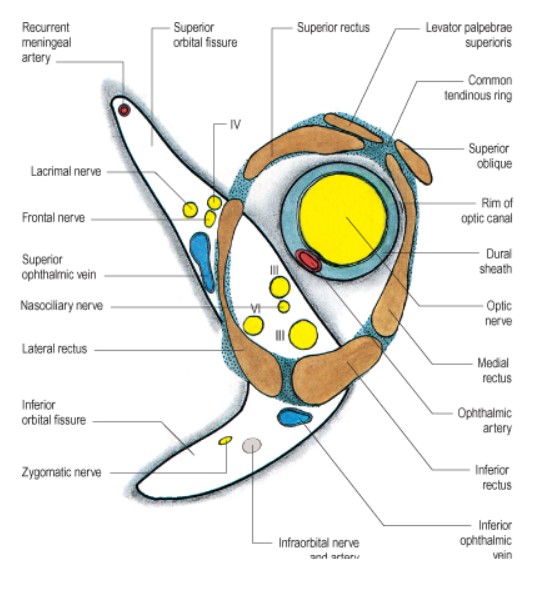Tistoryview
Disease&Treatment/Oculoplastics
👁 Orbit & Sensory Nerves around the Eye – Explained
eye_doc 2025. 4. 21. 08:58👁 Orbit & Sensory Nerves around the Eye – Explained
The orbit not only protects the eye but also acts as a pathway
for visual, sensory, motor, and autonomic nerves, as well as blood vessels.
This post summarizes the three key foramina and the nerves responsible for periocular sensation.
💡 Key Orbital Passages & Contents
ForamenContentsFunction
| Optic foramen | Optic nerve, ophthalmic artery, sympathetic n. | Vision & autonomic control |
| Superior orbital fissure | CN 3, 4, 6, CN 5-1, superior ophthalmic vein | Eye movement & upper eyelid sensation |
| Inferior orbital fissure | CN 5-2 (Maxillary), sympathetic n., infraorbital vessels | Lower eyelid sensation & vascular supply |


🧠 Sensory Distribution: CN V1 (Ophthalmic n.)
BranchSensory Area
| Lacrimal n. | Lateral upper eyelid |
| Supraorbital n. | Central upper eyelid |
| Supratrochlear n. | Medial upper eyelid |
| Nasociliary n. → Long ciliary n. | Cornea |
| Nasociliary n. → Infratrochlear n. | Nasal side |
| Nasociliary n. → Ethmoidal n. | Nasal cavity |
🧠 Sensory Distribution: CN V2 (Maxillary n.)
BranchAreaNotes
| Infraorbital n. | Lower eyelid | Travels through inferior orbital fissure → groove → foramen |
✅ Summary
- CN V1 supplies most upper & nasal sensory zones
- CN V2 uniquely supplies lower eyelid sensation
- Knowing these paths is essential for regional anesthesia & surgery
Next: Key surgical implications of orbital fractures
